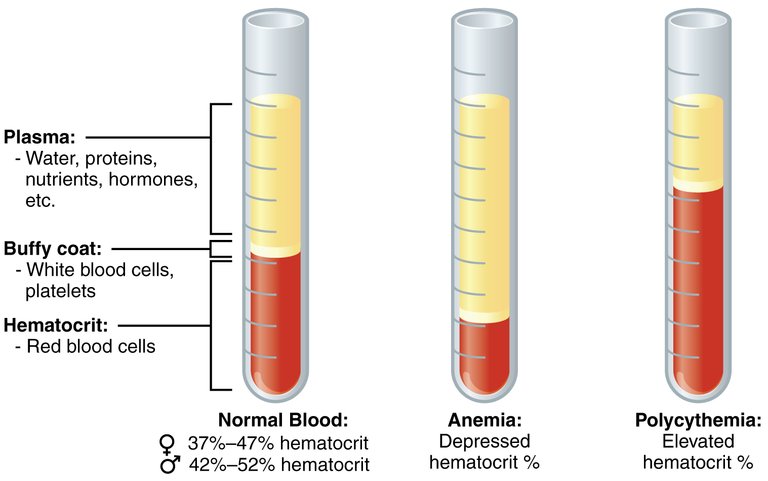What Blood is to Different Organisms
Blood is something that we are all familiar with especially the one with the red color, I mean the one you refer to as red blood cell even when it is a combination of different types of blood cells. In all this, we have been doing a lot of research to find out when organisms began to have blood and places like the Burgess shale has helped us identify over 30,000 fossils of armored Arthropods known as Marrella Splenders which are over 500 million years old. In their fossils were black smears found in their head or the tail end of the body and these is common with us and we know it as Blood.
Ranging from Red, Green, Black, Blue, Purple, and even White. Blood in the body is responsible for a number of things such as carrying oxygen to the body, supplying nutrients to the areas that need them, and removing waste product from the tissues and cells in the body. Because I said that blood is very useful doesn't mean all organisms need blood. Some organisms like sponge, jellies, and sea anemones do not need it as their body tissues are so tiny that oxygen can diffuse from their body into the ocean and from the ocean into their cells.
If we judge from sea anemones and jellies, we could say that the earliest forms of life didn't need blood as they were simple living and diffusion did the magic but as we started to become complex, there needed to be a way to circulate substances around the body. All living organism with a circulatory system share certain features together such as being bilaterally symmetrical (having two sides when cut into two), they also have internal body cavity which is used to cushion and hold their internal organs although there are a minute few that lost it over time.
There are simple organisms with no blood like I mentioned before but today, the simplest form of life that have the traits are Acoelomorphs which are flat, worm-like animals. While we do not know the earliest form of blood as that would be difficult to fine, and if we find one, another would break the record, scientists believe that they all have the same chemical model as many forms of blood use today but scientist still believe that a lot of them were blood proteins and not blood itself which meant that blood proteins were present before blood itself or what do you think, the egg or the chicken which came first.
For many animals, the blood protein of choice is Globin which binds to an iron molecule which is then sorrounded by a foughnut shaped molecule known as heme. On the opposite side of the iron, oxygen can bind to it. The globin fold is very good at holding on to oxygen and releasing it that it is used by different organisms to do a variety of jobs and in humans, we have blood carrying blood thanks to hemoglobin which is responsible for the red color of blood.
Just like we have hemoglobin in humans and some orher animals, different organisms have their version of oxygen binder that they use even though their usage is also different. For instance, we use hemeoglobin to transport oxygen from the lungs to other part of the body while organisms like clams use hemoglobin to store oxygen so they can use when they are in low oxygen environments. In fact, some nematodes have hemoglobin in their mouth lining so as to help the mouthpart get enough oxygen to feed even when in low oxegen environment. So it is clear that we use oxygen but not for the same purpose.
Mollusks and Arthropods have another type of oxygen binder known as hemocyanin which binds with copper instead of iron and this is why these organisms have blue blood since corper turn greenish-blue when oxidized.
Reference
https://pmc.ncbi.nlm.nih.gov/articles/PMC5378490/
https://pmc.ncbi.nlm.nih.gov/articles/PMC3097462/
https://onlinelibrary.wiley.com/doi/10.1155/2009/301284
https://courses.lumenlearning.com/wm-biology2/chapter/circulatory-system-variation-in-animals/
https://journals.biologists.com/jeb/article-abstract/201/8/1099/7951/Hemoglobins-From
https://journals.physiology.org/doi/full/10.1152/physrev.2001.81.2.569?
https://pmc.ncbi.nlm.nih.gov/articles/PMC2614223/
https://onlinelibrary.wiley.com/doi/abs/10.1111/j.1502-3931.1997.tb00458.x
https://www.nature.com/articles/ncomms4560
https://pmc.ncbi.nlm.nih.gov/articles/PMC3543078/
http://thebiologyprimer.com/the-origin-and-evolution-of-animals/
https://books.google.com.ng/books?id=pKlVDwAAQBAJ&pg


You received an upvote ecency
https://www.reddit.com/r/biology/comments/1jnj2ip/about_blood_a_basic_explanation/
The rewards earned on this comment will go directly to the people( @stekene ) sharing the post on Reddit as long as they are registered with @poshtoken. Sign up at https://hiveposh.com. Otherwise, rewards go to the author of the blog post.
Thanks for your contribution to the STEMsocial community. Feel free to join us on discord to get to know the rest of us!
Please consider delegating to the @stemsocial account (85% of the curation rewards are returned).
You may also include @stemsocial as a beneficiary of the rewards of this post to get a stronger support.